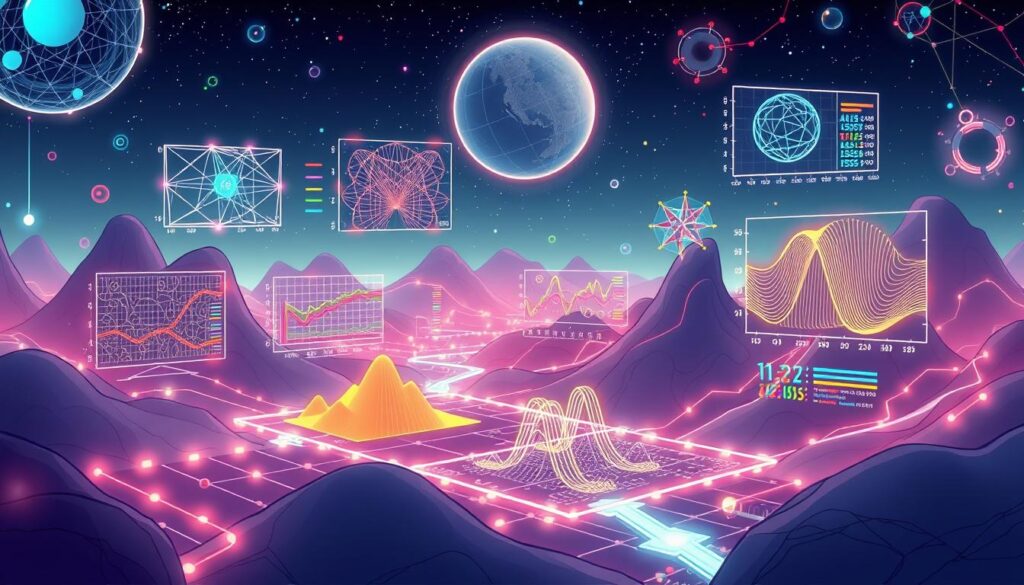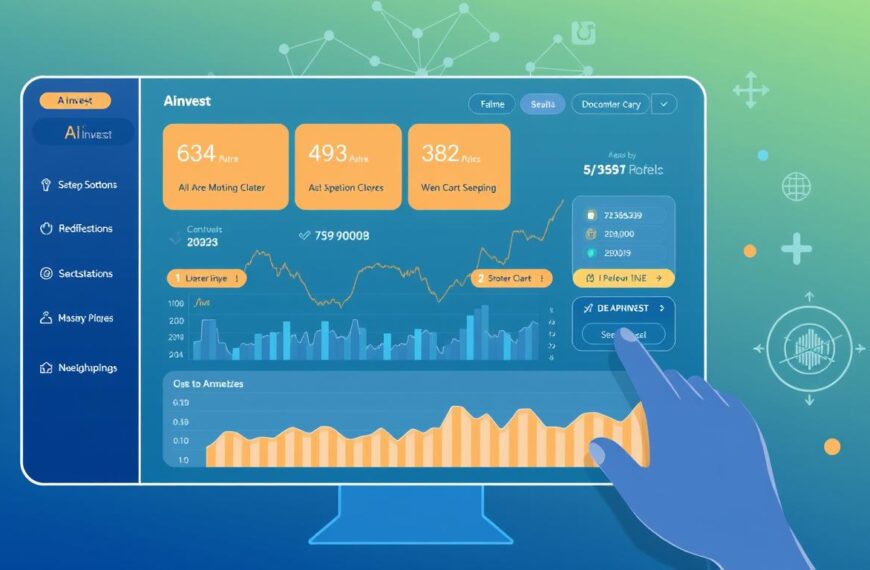In 2012, a major breakthrough happened in artificial intelligence (AI) and computer vision. AlexNet, a deep learning model from the University of Toronto, won the ImageNet Large Scale Visual Recognition Challenge. It beat the second-place entry by a huge margin, sparking a new wave of interest in neural networks.
AlexNet’s win showed the huge potential of deep learning in solving complex computer vision tasks. Its architecture, with eight layers and new techniques like ReLU, set a new standard. This success led to the development of even better models like VGGNet, GoogLeNet, and ResNet, each improving on AlexNet’s achievements.
Key Takeaways
- AlexNet’s victory in the 2012 ImageNet Challenge showcased the transformative potential of deep learning in computer vision
- The model’s innovative architecture, including techniques like ReLU and dropout, inspired the development of subsequent deep learning models
- AlexNet’s success reignited interest in neural networks and ushered in a new era of deep learning research and applications
- The model’s ability to learn complex patterns and representations from raw data reduced the need for manual feature engineering
- AlexNet popularized the concept of transfer learning, enabling developers and researchers to leverage pre-trained models for a variety of tasks
The Birth of Modern Deep Learning Architecture
2012 was a key year for computer vision and deep learning. AlexNet, a groundbreaking CNN, won the ImageNet Large Scale Visual Recognition Challenge. This win showed deep learning’s huge potential, changing image recognition and classification forever.
The 2012 ImageNet Competition Breakthrough
A team led by Alex Krizhevsky, Ilya Sutskever, and Geoffrey Hinton created AlexNet. It won the ImageNet competition by using deep learning and GPUs. AlexNet’s top-5 error rate was just 15.3%, beating the previous best by 11 percentage points.
This achievement led to fast progress in computer vision and the use of convolutional neural networks.
Key Contributors Behind AlexNet Development
AlexNet’s creation was a team effort. Alex Krizhevsky, a University of Toronto doctoral student, was the main architect. Ilya Sutskever, also a PhD student at the University of Toronto, helped with training and optimization.
Geoffrey Hinton, a top neural networks expert, supervised and mentored the team. His guidance was crucial for their groundbreaking work.
Initial Impact on Computer Vision
AlexNet’s success in the 2012 ImageNet competition changed computer vision. It showed convolutional neural networks could solve complex visual tasks. This led to a new era of research and applications in computer vision.
AlexNet’s design influenced later CNNs like VGGNet, GoogLeNet, and ResNet. These advancements improved image classification and object detection.
The breakthrough also led to practical uses in areas like self-driving cars, medical imaging, and personalized recommendations. This achievement in computer vision pushed researchers to create even more complex neural networks. This progress has benefited many industries and fields.
AlexNet and Deep Learning: Core Architecture Components
The AlexNet architecture was a game-changer in deep learning components. Developed by Alex Krizhevsky, Ilya Sutskever, and Geoffrey Hinton, it brought new ideas to computer vision and image recognition.
At its core, AlexNet used convolutional layers with small fields and many filters. This setup helped the model spot detailed visual features and patterns. Rectified linear units (ReLUs) were used as activation functions. They sped up training and solved the vanishing gradient problem.
AlexNet also included local response normalization (LRN) layers to improve its performance. Max-pooling operations were used to reduce overfitting and capture spatial patterns. These features, along with the model’s depth, helped it win the 2012 ImageNet Large Scale Visual Recognition Challenge (ILSVRC).
“AlexNet’s convolutional layers, ReLU activations, and new regularization techniques set the stage for big leaps in deep learning and computer vision.”
AlexNet’s success opened a new chapter in deep learning. It inspired many researchers and engineers to explore the limits of artificial intelligence.
Revolutionary Technical Innovations of AlexNet
The AlexNet convolutional neural network (CNN) was introduced in 2012. It was a major breakthrough in deep learning. The ReLU activation function was a key innovation. It made training faster and improved performance compared to older functions.
Dropout regularization was another technique used by AlexNet. It randomly drops out neurons during training. This helped prevent overfitting and improved the model’s ability to handle new data.
GPU Computing Optimization
The team used GPU computing to make AlexNet successful. Training on two NVIDIA GTX 580 GPUs made the process much faster. This allowed for more complex models and helped start the use of GPU-accelerated deep learning.
The innovations of ReLU, dropout, and GPU computing were crucial for AlexNet’s success. They led to a significant drop in the top-5 error rate in the ImageNet Challenge. This achievement inspired further advancements in deep learning, making AlexNet a key milestone in AI history.
Understanding AlexNet’s Neural Network Layers
AlexNet was a game-changer in computer vision. It had a unique neural network design. This design helped the model learn complex features from images.
The model had five convolutional layers and three fully connected layers. The convolutional layers picked out visual details. They used different sizes and steps to find various patterns.
- The first layer had 96 filters of size 11×11 with a stride of 4. It caught big visual details.
- The second layer had 256 filters of size 5×5 with padding of 2. It refined the features further.
- The next three layers used 3×3 kernels with padding of 1. They focused on small details and relationships.
The fully connected layers did the final thinking. They combined the features to classify images into 1,000 categories. The first two layers had 4,096 neurons each. The last layer had 1,000 neurons, matching the ImageNet dataset.
AlexNet’s design was a big step forward. It was much deeper than earlier models. This depth allowed it to learn complex, detailed images. Its success paved the way for even more advanced models.
“AlexNet’s layered structure became a blueprint for future deep learning models, showcasing the power of depth in neural network design.”
Impact on Image Classification and Recognition
AlexNet’s deep learning architecture changed the game in image classification and recognition. Its win in the 2012 ImageNet Large Scale Visual Recognition Challenge (ILSVRC) raised the bar for computer vision tasks.
The model’s top-5 error rate of 15.3% on the ImageNet dataset was a huge leap from the previous best of 26.2%. This showed deep learning’s strength in solving tough image recognition problems.
Performance Metrics and Benchmarks
AlexNet’s success in the ILSVRC competition set new standards for judging image classification models. Its top-5 error rate became a key metric for comparing different computer vision systems.
Comparison with Previous Models
Before AlexNet, traditional methods like Support Vector Machines (SVMs) and Handcrafted Feature Extractors were used. But AlexNet’s deep neural network outshone these, proving deep learning’s edge in image recognition.
Real-world Applications
AlexNet’s win in the ImageNet challenge opened doors for deep learning in many areas. It led to big steps forward in self-driving cars, medical imaging, and personalized recommendations, among others.
AlexNet’s groundbreaking work and innovative design paved the way for deep learning’s fast growth in image classification and computer vision applications.
Data Augmentation and Training Methodologies
AlexNet’s success wasn’t just about its architecture. It was also about smart data augmentation and training methods. The model used random cropping and flipping to learn important features. This helped it avoid overfitting and perform well on tough tasks.
The team behind AlexNet trained the model on big datasets. They used GPUs to speed up the process. These steps became key in deep learning, leading to big improvements in many areas.
| Technique | Impact | Key Benefits |
|---|---|---|
| Data Augmentation | Improved model generalization and reduced overfitting |
|
| Large Dataset Utilization | Enabled complex model training and learning |
|
| GPU Computing | Enabled efficient and rapid model training |
|
After AlexNet, data augmentation, large datasets, and GPU computing became essential in deep learning. They helped lead to huge leaps in computer vision and AI.
“Data augmentation and training methodologies were critical factors in AlexNet’s success, laying the foundation for the remarkable progress we’ve seen in deep learning since then.”
Transfer Learning and AlexNet’s Influence
The introduction of AlexNet in 2012 was a game-changer in deep learning. It revolutionized computer vision. AlexNet made transfer learning popular, a key technique in many fields today.
Pre-training Applications
AlexNet won the ImageNet Large Scale Visual Recognition Challenge in 2012. This showed how pre-training deep neural networks works. It uses large, diverse datasets to learn features.
These features can then be adapted for specific tasks with less data. This is known as transfer learning. It helped in many areas, like object recognition and medical image analysis.
Model Adaptation Strategies
After AlexNet’s success, researchers found ways to adapt the model for new tasks. They removed layers specific to ImageNet and added new ones. This made pre-trained models work well on different tasks with less data.
AlexNet’s impact on transfer learning is huge. It made deep learning more accessible. Its influence is seen in healthcare, autonomous vehicles, security, and more. AlexNet’s legacy continues to drive progress in computer vision and artificial intelligence.
Evolution of Computer Vision Post-AlexNet
The success of AlexNet in 2012 was a big deal for computer vision advancements. It led to better models like VGGNet, GoogLeNet, and ResNet. These models do great in tasks like finding objects, segmenting images, and recognizing faces.
AlexNet’s success also helped other areas of AI evolution, like understanding language and recognizing speech. Its architecture and techniques have pushed deep learning progress forward.
Here are some key developments after AlexNet:
- VGGNet made models more efficient by using smaller kernels.
- GoogLeNet introduced the Inception module for better feature detection.
- ResNet solved the vanishing gradient problem, making deeper networks possible.
These changes have led to many practical uses, like self-driving cars and medical imaging. The ongoing improvement in deep learning has changed the AI evolution and deep learning progress landscape.
“The shift towards classical machine learning was influenced by factors such as computational constraints, transparency & interpretability needs, limited data availability, mature toolkits & libraries, the versatility of solutions, and the perceptron’s limitations in handling non-linearly separable data.”
The field of computer vision keeps growing, thanks to AlexNet’s groundbreaking work. It shows the power of deep learning progress and its role in computer vision advancements.
Industry Applications and Commercial Impact
AlexNet, a groundbreaking deep learning model, has changed many industries. It has made AI a big part of healthcare, medical imaging, and more. Its impact is huge, making things like self-driving cars and security systems better.
Healthcare and Medical Imaging
Deep learning, inspired by AlexNet, has changed healthcare. It helps doctors find tumors and diagnose diseases better. These tools can make healthcare faster and more accurate, helping patients more.
Autonomous Vehicle Systems
Autonomous vehicles have made big strides thanks to deep learning. Models like AlexNet help them see and understand their surroundings. This makes self-driving cars safer and closer to becoming a reality.
Security and Surveillance
Deep learning has also improved security systems. It helps in facial recognition and spotting unusual activities. This makes public safety better and threats easier to catch.
The success of AlexNet shows how AI can change businesses. As more industries use these advanced algorithms, we can expect even more breakthroughs. The future looks bright for AI’s impact.
Modern Implementations and Framework Support
The AlexNet architecture has become a key part of deep learning frameworks. It’s now easy for researchers and developers to work with and improve the original model. This is thanks to pre-trained AlexNet models in TensorFlow, PyTorch, and Keras.
Adding AlexNet to these frameworks has made AI research and development more accessible. Developers can quickly test and refine new models. This has sped up progress in computer vision and image classification.
Today’s versions of AlexNet often include new features to boost performance or tackle specific tasks. The flexibility of deep learning frameworks has helped the model stay relevant and impactful. It continues to evolve in the fast-changing world of AI software and deep learning frameworks.
AlexNet’s architecture has shown its importance in computer vision. As deep learning grows, AlexNet’s legacy remains crucial. It’s a key part of deep learning frameworks and the search for AI software solutions.
“The availability of pre-trained AlexNet models in popular frameworks has contributed to the democratization of AI research and application development.”
Conclusion
The introduction of AlexNet in 2012 was a big deal for deep learning and image recognition. Its new design and great results opened up a new world of AI. AlexNet’s work has helped many areas, making advanced AI easier to use and inspiring new ideas.
Today, AlexNet’s legacy is key to AI’s growth. Its win in the ImageNet challenge and new techniques like ReLU and dropout have changed AI. These steps have set the stage for AI’s future.
AlexNet’s influence will keep growing, shaping AI’s future and deep learning’s impact. Its design and the lessons from its creation will guide computer vision and AI. AlexNet shows how big a difference a breakthrough can make in our progress.






